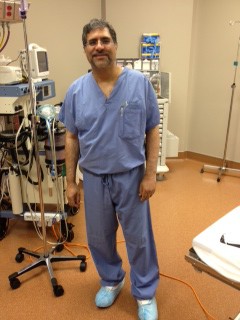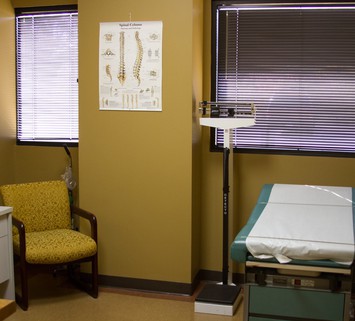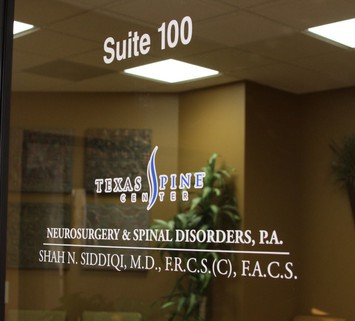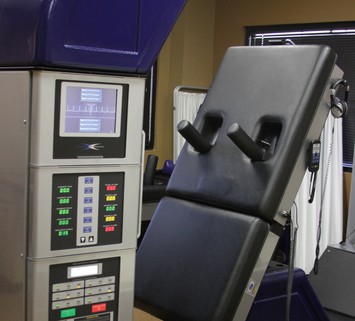Wondering if laser spine surgery is a good choice? Laser spine surgery is considered a highly controversial topic among medical spine care professionals as a solution to treat pain. While some Orthopaedic Neurosurgery Specialists do not offer or use laser spine surgery, others find it preferable for their patients. From how this treatment is advertised to the general public, it creates several misconceptions of what the surgery actually entails.
The whole purpose of spinal surgery is to alleviate chronic pain by decreasing the pressure on a compressed nerve or by stabilizing the spine. Due to heavy advertisement and spinal care professionals wanting to stand above their competitors, laser surgery can sometimes give a vague idea of the surgery itself and provide uninformed hopes of relief for anyone suffering from pain. Below are some common misconceptions people think when talking about laser spine surgery.
1. Lasers are the sole tool in spine surgery and do not involve an incision.
A common misconception people deal with regarding this treatment option is that surgeons use lasers as the only tool during spine surgery. The laser part of the spine procedure is minimal. The surgery itself still requires an incision to access the spine, a smaller incision when compared to traditional open spine surgery. After cutting the incision, the spine surgeon uses a focused beam of light to remove pieces of soft tissue atop the spine that can compress nerves causing the source of pain which include ligament enlargement and herniated discs. After this happens, medical instruments are then used.
2. Laser surgery can treat patients with all types of pain.
Another misconception is that lasers can treat all patients. While this surgery may be helpful to patients with certain conditions, there are other treatments that work such as traditional and minimally invasive surgery. Depending on the type of pain a patient has, will be the preferred form of treatment. For example, a patient with a spinal condition such as spinal stenosis or spinal narrowing, which puts pressure on the spinal cord along with the nerves within the spine are more likely to undergo minimally invasive or traditional surgery. This is due to the fact that with a laser approach there will be limited exposure, and because the lasers cannot cut through or remove bone unlike an experienced surgeon with a scalpel.
3. Surgery using a laser is a new advanced technology.
This is not accurate. Medical professionals have had availability to lasers and laser technology since the latter part of the 1900s.
4. Laser surgery is a quick fix. There are no risks.
While this kind of treatment is heavily promoted for patients with chronic back pain, neck pain and leg pain, the use of lasers can result in major complications in the hands of inexperienced professionals. If a surgeon performs the incorrect treatment to a patient, the likeliness of pain returning and the need for additional surgeries are of higher risk as well as the risk of possible nerve or tissue damage from lasers. This is especially true when dealing with disc tissue since they lie next to the nerve root.
5. The second opinion is always wiser.
While this may be true in certain situations, it is not always correct. Realistically, getting a second opinion will most likely always sound more intelligent than the first. If there is uncertainty, getting a third opinion may help weigh out options.
6. Laser Spine Surgery and Minimally Invasive Spine Surgery are the same.
Laser Spine Surgery and Minimally Invasive Spine Surgery both use smaller incisions, provide relief while reducing blood loss and pain and make for a faster recovery. On the other hand, laser spine surgery uses a laser to make the incision then uses medical instruments while minimally invasive spine surgery uses a scalpel for the incision then inserts an endoscope as well as other medical instruments for a visualization of the surgical site. Additionally, minimally invasive surgery is better for maneuvering and removing ligaments or bone compared to laser spine surgery.
Tips to remember
Being educated is important when it comes to a person’s overall health and pain. Listed below are some tips to remember or ask when considering undergoing spine surgery.
Everybody experiences pain differently. No one treatment option will work for every individual. Do the research and make sure to receive a proper diagnosis in relation to your pain.
Choose a trained physician experienced in traditional as well as minimally invasive spine surgery. If a physician only practices one, he or she may believe their option is the best and will say anything to not lose a potential patient.
Find out if there are any alternative methods available that will relieve pain, such as physical therapy or epidural steroid injections.
More complicated back problems will usually require traditional surgery as opposed to minimally invasive spine surgeries using lasers. This will likely bring about the best outcome in diminishing the source of pain.
Ask what the operation will entail. Never be surprised. Get specifics.
Ask if there are any potential complications, what are they, and if there will be complication rates. These type of inquiries will allow you to decide whether laser spine surgery is good for you.
Do Not Live in Pain
No one should live their day to day life in constant pain. At Texas Spine Center, our mission is to find the best treatment option to help cure your pain. Whether it is through traditional, minimally invasive, laser or non-operative care, we put our patients’ health first.



